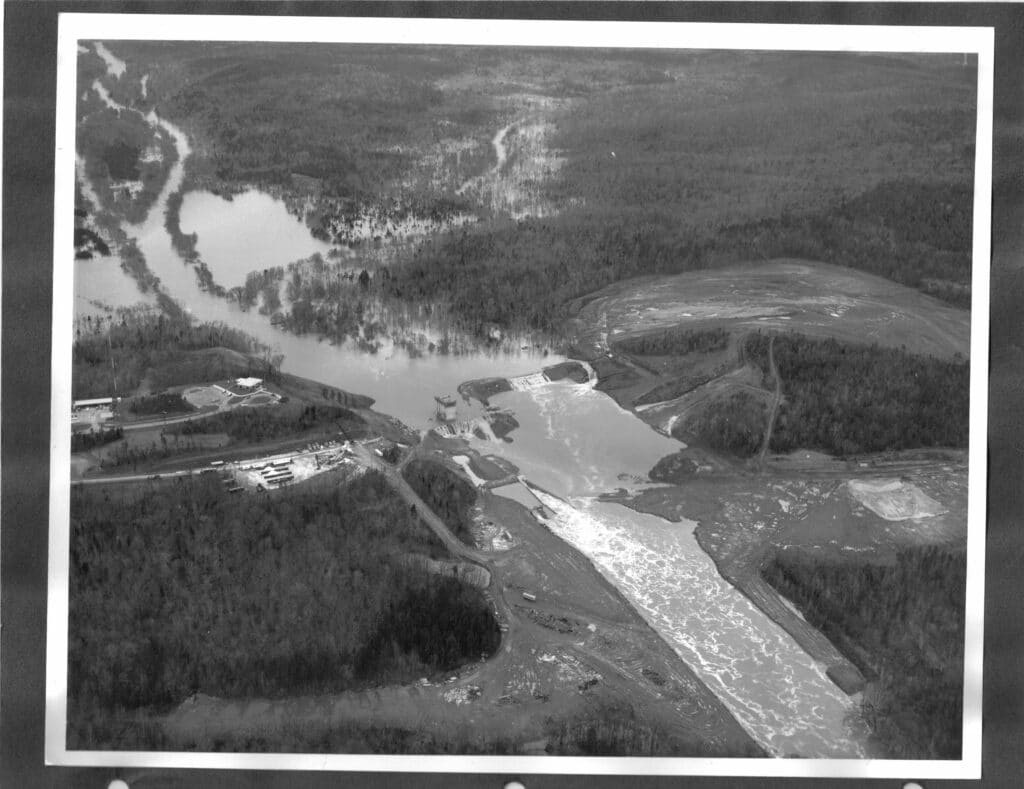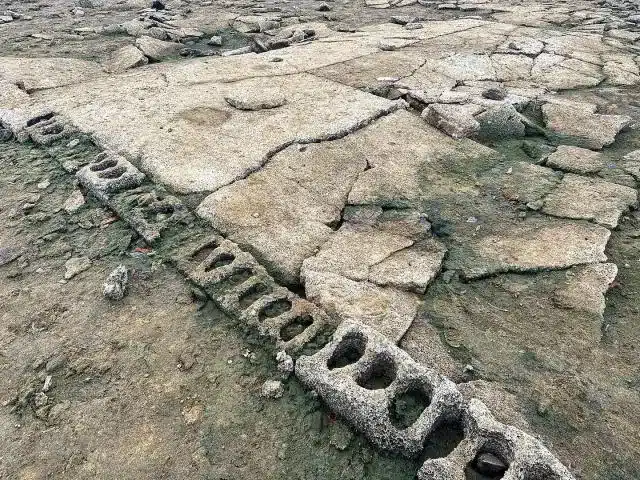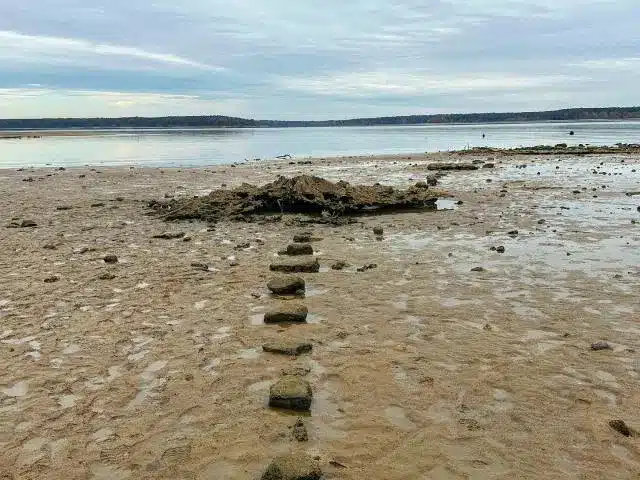North Carolina has been in a drought for a few months, and it is starting to show in the state’s waterways. At Jordan Lake, local residents and out-of-towners are enjoying a rare glimpse into the history buried beneath the water’s surface. Before the lake was constructed by the Army Corps of Engineers, it was a large valley, and humans lived there beginning around 10,000 years ago. In 1982, the Corps began filling it up, and the project was completed in 1983. What many people do not realize is that, prior to the start of excavation work in 1970, there were whole towns in New Hope Valley, as it was once called, full of homes, churches, and farmsteads. While the region had very rich soil that created great farming conditions, the New Hope Valley was prone to flooding, and, after the area was decimated by a hurricane in 1945, the federal government decided to turn it into a reservoir.

Photo Courtesy of the U.S. Army Corps of Engineers
From 1963-1970, the communities in New Hope Valley were abandoned, as the government bought the land and locals were forced to leave their homes, farms, and even graveyards behind. Seaforth, Pea Ridge, and Farrington are just a few of the small towns that were wiped off of the map, but in November of this year these ghost towns began to emerge. Historians flocked to the site, along with the descendants of the people who used to live there, to catch a glimpse of and document the decaying structures and artifacts. The history and physical location of those communities has yet to be studied in an archaeological context. Before the reservoir was filled, archaeological excavations were performed to record the history and salvage any artifacts deemed historically significant. But those excavations, which started in 1978 and ended a year later, were less concerned with the modern villages and were more concerned with the prehistoric context.

Photo Courtesy of WRAL News
Today, descendants of the farmers and landowners forced to leave New Hope Valley are interested in documenting what they can of their more recent past. If this drought continues, there could be the potential for cultural resource management (CRM) work at Jordan Lake. The North Carolina Department of Natural and Cultural Resources, and their private CRM partners, may be able to map out the location of structures, roadways, and even cemeteries. Contacting the descendant communities to get their oral histories and any written or photographic evidence of how the towns used to look can help piece together what has been lost. Our heritage and culture are wrapped up in our homes, wrapped up in where we are from; at Jordan Lake, some forgotten communities are emerging, if only for a short time. We should not let this fleeting treasure trove of history go to waste.

Photo Courtesy of WRAL News
